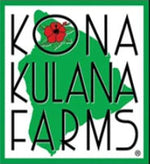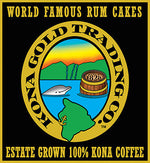Macadamia nuts are known for their rich flavor profile with a touch of sweetness. Through a process called intercropping, Macadamia plants boost the health of coffee by providing necessary shade, temperature regulation and a greenhouse effect.
These plants work together to better the environmental conditions and soil fertility of the surrounding area. Better yet, macadamia plants enrich coffee fruits with a nutty and buttery Creme Brulee flavor. Our Macadamia Nuts are also equipped with a robust flavor highlighted by notes of floral, honey and vanilla
In this article, we will explore the benefits of intercropping these plants and a brief history of Hawaiian macadamia nuts.
The Origin Story of Hawaiian Macadamia Nuts
Originating in Australia, the first Macadamia plant was brought to Hawaii in 1881 by William Purvis. By 1892, the Jordan brothers grew their own trees, expanding the island’s population. The Hawai’i Macadamia Nut Company, founded by Ernest Van Tessel, began commercial planting in 1921. After struggling to create healthy plant growth, they officially began processing nuts in 1934.
By the late 1940s, major companies leading Hawaii’s sugar production took notice of the macadamia nut industry. They began planting orchards that would change the future of macadamia plants forever. In 1976, this Hawaiian brand became known as the acclaimed Mauna Loa. Today, Hawaii harvests over 90% of the world's macadamia nuts.
The Benefits of Planting Coffee and Macadamia Plants Together
Enhanced Shade Coverage
Coffee is derived from an evergreen plant that is highly susceptible to global climate change stressors. Many areas are no longer suited for coffee growth due to rising temperatures and tumultuous climates.
Macadamia plants protect the coffee from temperatures and water shortages, limiting the risk of damage from sun, wind, and frost. Macadamia plants are a necessary aspect of our prosperous coffee growth on our biodiverse farm Imagine.
Soil Nutrient Density
Intercropping is a sustainable farming method that increases biodiversity and nutrient density in the soil. As a result, all plant growth is fortified with added nutrition necessary to thrive through all climate seasons. We grow all of our coffee with Macadamia plants to ensure the health of both plant species and the surrounding environment. The best way to enjoy the brillant duo of these two prosperous plants is by snacking on Coffee-Infused Macadamia Nuts.
Unique Flavor Profile
The coffee trees in Imagine share a root system with macadamia plants, naturally enriching the flavors of the coffee bean and macadamia nuts. We harness the power of nature to transform the flavor profiles of our coffee grounds for ultimate enjoyment and a smooth, caramelly taste. Additionally, our Macadamia Nuts grow in optimal conditions to accentuate their naturally irresistable flavor and crunch.
Enjoy The Tasty Crunch of Buddha’s Cup Macadamic Nuts
It’s our priority to create a unique flavor and taste in all of our products, including coffee and macadamia nuts. We utilize biodynamic farming with zero pesticides, alongside intercropping techniques to create indulgent, nature-made 100% Kona coffees. Further, we offer Imagine-grown Macadamic Nuts in dry roasted and chocolate-covered coffee flavors. Our products are better for you and our planet.
Explore our variety of coffee and macadamia nuts, found exclusively here at Buddha’s Cup.















